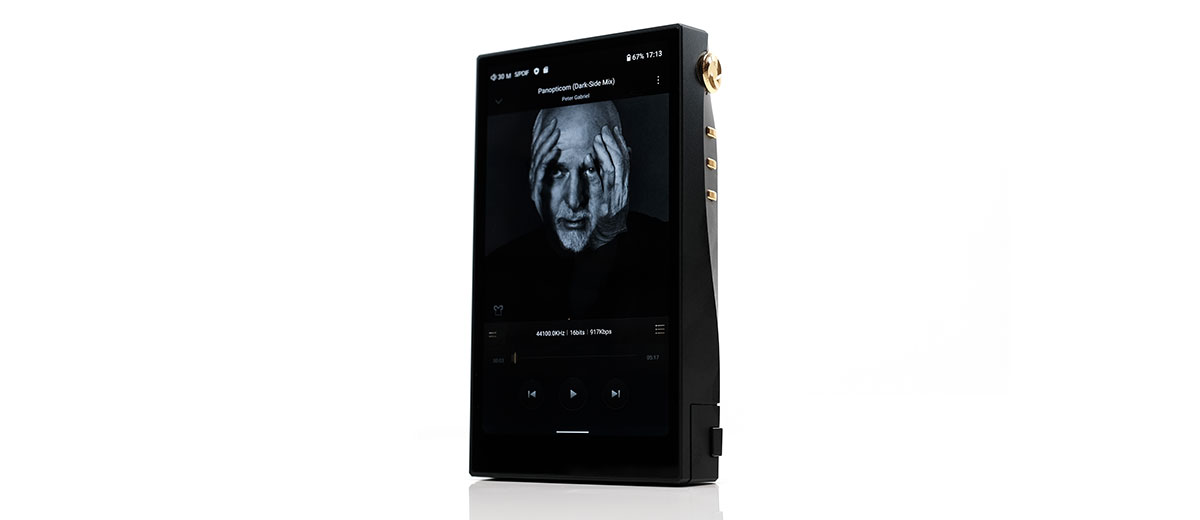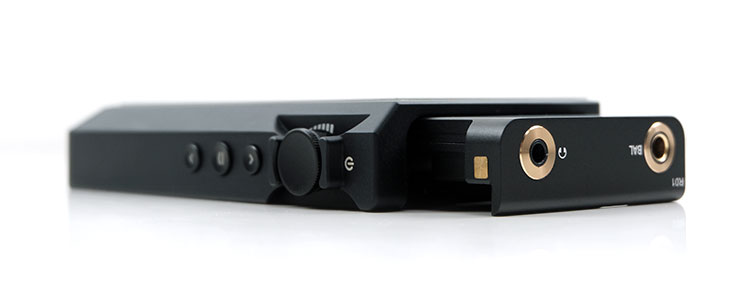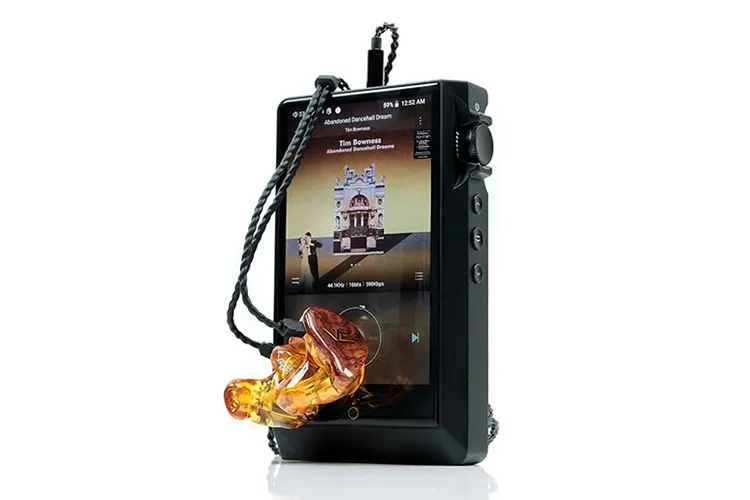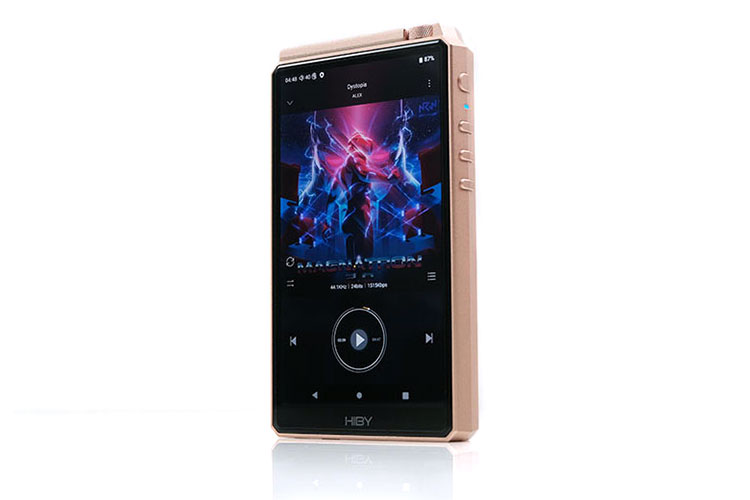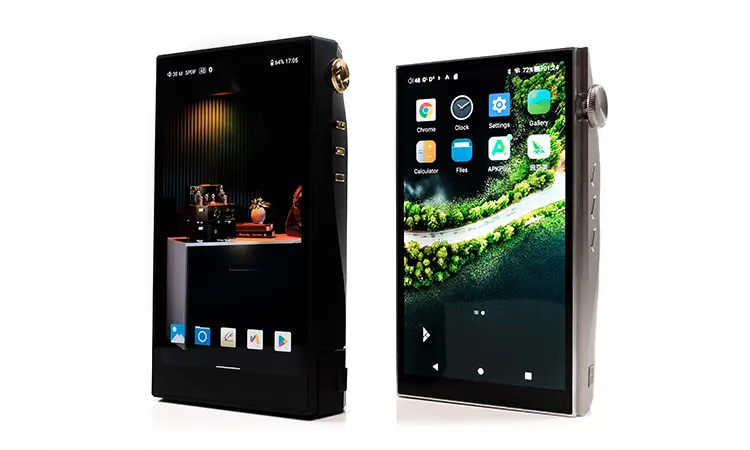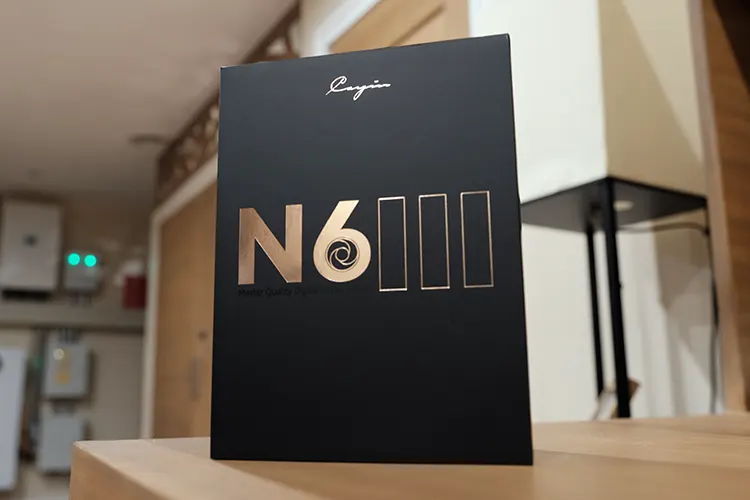Selected Comparisons
The following comparisons to the Cayin N6iii were completed via the balanced 4.4mm output using the Campfire Audio Solaris Stellar Horizon and the Vision Ears EXT MKII.
Cayin N6ii (R01 Motherboard)
The Cayin N6ii was launched in 2018, with our review coming around the same time. The R01 motherboard came out in 2021. For this comparison, I pitched the N6iii’s E203 motherboard against the R01 since both are purely for headphone/IEM outputs with no lineout.
Technical
I have gone through the N6iii and N6ii player differences in quite some detail already, so I will focus more on the E203 and R01 motherboard technical variations.
The key difference is the DAC implementation with the R01 using an R2R, 24BIT resistive ladder network comprising 96 resistors or 48 per channel, which contrasts sharply with the delta-sigma ES9039SPRO-equipped E203.
Both motherboards lack a lineout option with balanced amplification topologies that are discrete-designed (hybrid for the E203) and cater to portable headphone/IEM use only.
The R01 decoding capability is tied to the N6ii player, so it is a bit lower than the N6iii/E203 combo at a maximum of DSD256 and PCM 32BIT/384kHz compared to DSD512 and PCM 32BIT/768kHz.
The amplification output rating of the R01 is 430 mW into a 32Ω load balanced and 240 mW single-ended into the same load. That is a fair bit lower than the E203’s 700mW balanced and 300mW SE into the same load without Hyper Mode.
With Hyper Mode, the N6iii/E203 can hit 900mW balanced and 400mW SE into 32Ω, but at the cost of a fair bit of battery life. The E203 can also deliver around 7-8 dB more dynamic range with far lower distortion numbers, but R2R DACs have never really measured well for distortion.
Both motherboards have sub-ohm amplification output, so there should be no issues with IEM drivers sensitive to impedance skew.
Design
The N6ii is lighter and more compact than the N6iii, but with that, you get a smaller 720 4.2″ screen, so the legibility gap is noticeable alongside the slower Snapdragon CPU and 2GB less RAM.
The N6iii 5″ 1080p screen is pleasingly larger but not huge in today’s DAP market. The switch to a more modern Android 12 and the faster CPU/RAM setup make the UI more user-friendly than the hesitant N6ii experience.
A smaller DAP means smaller motherboards, but it is the swapability of the cards that makes the qualitative difference here.
The small microcontroller embedded in the new motherboards for the N6iii, combined with the easy detach locking system, makes it a simple hot-swapping process. Whereas the N6ii tiny screw (and associated screwdriver) system is comparatively arduous and not hot swappable (at least not recommended).
Another wise design change from Cayin has been to dislocate the power and screen on/off away from the volume dial to avoid accidental changes and turning on or the DAP off when you least expect it to.
The N6ii multifunctional dial is right where I like to handle the player, and quite a few times I have accidentally turned it on or prompted the off screen during use.
The one N6ii I/O I will miss is the I²S output. I used that a lot in my home setups to get away from the noise of a PC USB connection.
The choices for an integrated N6iii HiFi setup are a USB-C to coaxial output or direct from its USB-C to any USB input on a streamer. Just do not forget to switch to USB-DAC charging when in use for longer periods.
Motherboard Performance
I still love the relatively sweet and analog tones of the R01/N6ii, but unless you are 100% wedded to its unique sound signature, the E203/N6iii delivers more right across the board, especially when switching to Hyper Mode.
The weak spot of the N6ii/R01 pairing is the midrange, which lacks a bit of presence and firmness to my ear compared to the E203/N6iii.
The R01 emphasis has bias to the lows and highs, so the sparkle is nice, and the weight is surprisingly good. However, it’s a softer, more eloquent tone, lacking the same definition, punch, and overall balanced presentation of the newer card.
The R01 works well with brighter IEMs such as the Stellar Horizon but less so with the EXT MKII, where the lack of bass bloom and control and laidback midrange sounds less balanced and not as well defined.
The E203 in Class A is almost as smooth, save for some additional sparkle and better layering on the lows that give it a more chiseled tone. Importantly, vocals are vividly portrayed with more body and focus than the R01.
With the EXT MKII, there is more room for the mids to shine, and the bass bloom is kept in check. The Stellar Horizon works well with the E203/N6iii’s smoother, more relaxed Class performance.
The Class AB without hyper mode is punchy, but the coloration is a bit dry compared to the older R01. It’s a tougher pairing with the Solaris, given its more neutral tuning.
I would rather skip to the Hyper Mode, where you get a fleshier, more vibrant, and three-dimensional sound signature from all the tested IEMs. This mode made the R01/N6ii performance sound narrow, flatter, and less dynamic.
HiBy RS6
The HiBy RS6 was launched in late 2021, with our review sneaking out just before the end of the same year, along with a Top Gear Editors’ Choice Award. The RS6 has the same price as the N6iii with the stock C201 motherboard, so that’s the card we will compare to the RS6.
Technical
This is another R2R competitor as opposed to the N6iii delta-sigma DAC inside the C201 Motherboard.
Bear in mind, though, that the RS6 has a fixed DAC and amplification topology (Darwin), unlike the swappable N6iii ecosystem, so I almost half-expect an R-2R or 1BIT DAC motherboard at a later stage.
The RS6 R2R implementation is a 24-bit resistor ladder network design with individual matching resistors (within 1/1000) at 48 per channel with a specific and separate set of Low Pass Filters (LPF) for DSD HF noise reduction via the DSD bypass functionality.
Maximum decoding levels are lower on the RS6 at DSD256 compared to DSD12 on the N6iii, but both are capable of PCM 32BIT/768kHz and have an Android bypass or DTA architecture for bitperfect audio. The two DAPs also use BT classic chipsets up to LDAC and UHT, a setup superior to the N6ii LE setup.
With the N6iii using the C201, the output power is similar to the RS6, which is capable of 180mW@32Ω SE and 690mW@32Ω balanced, compared to the N6iii’s C201 at 260mW SE up to a maximum of 700mW balanced. Line-out options are available in SE and balanced for both.
The Android 9 OS version is a generation or two behind the N6iii’s Android 12. That is understandable given the age gap of 3 years between the two players, though the experience is not hugely different with both using a Snapdragon 6-series CPU.
Where the RS6 falls behind is the 4GB instead of 6GB of RAM and the simpler-looking interface, which is heavily skinned with their Darwin theme. You can see that in its AnTuTu performance benchmarking where it’s almost half the ‘MEM’ score of the N6iii.
Design
Knowing HiBy and Cayin are close partners, I would say there is some overlap in the design language of these two DAPs.
Particularly so with the similarly edged chassis styling on the side panels and the narrow and tight button controls on the right panel. Granted, the form factor of the N6iii is quite different, with a huge gap in height to accommodate the Motherboard system, making it the thicker of the two players.
The RS6 version I have here is the 315g copper version, so despite its visibly flatter dimensions, it still feels quite hefty compared to the 350g of the N6iii with the C201 motherboard.
Both DAPs use a 5″ 1080p display panel, but I rate the N6iii version slightly superior visually, with the numbers confirming a stronger pixel density at 387 ppi compared to the RS6 at 320 ppi. Also, dark mode is not consistent on all the RS6 apps due to the lower Android version.
The ports are split on the N6iii rather than all on the base panel for the RS6. Some prefer it all on the base, but I prefer the split for feeding wired into desktop DACs in any home setup or charging. It keeps the interface cleaner for cables.
I do like the dedicated lineout ports on the RS6. It’s a little easier than digging into the menu of the N6iii/C201 combo to switch it. Bear in mind, if you are using the E203 motherboard, there is no lineout option, but you do get more operational amp modes and the Hyper Mode.
Battery performance is a weak point on the RS6, especially compared to the C201 motherboard. Its smaller 4500mAh li-poly taps out at around under 9 hours single-ended, a good deal lower than the N6iii/C201’s 14-hour rating.
Performance
The RS6 has a more overt coloration with paired IEMs compared to the more accurate, naturally balanced sound of the C201/N6iii combo.
In some instances, its denser, creamier tones work well. With the Stellar Horizon, vocals sounded full and nicely rounded, doing a good job of keeping any potential for unpleasant peakiness to a minimum in the highs.
With the EXT MKII, it delivered a fuller, thicker set of lows than the C021, placing this IEM’s strongest asset to the fore. However, it lacks air and height and is not on the same level for staging dimensionality compared to the C201/N6iii.
Your ear is more fixed on the bass warmth and weight and strong vocal weight, but the layering behind and the relative height and presence of higher-pitching instruments are weaker than the C201.
With the C201, everything is cleaner but clearer sounding. There is plenty of space in and around each note or instrumental and vocal placement. The bass warmth is reduced, but the punch and dynamic snap are enhanced.
With the Stellar Horizon, it’s a more neutral sound, not quite as euphonic or creamy in its delivery, but at the same time, it avoids sounding peaky or lean in its delivery. More to the neutral/natural side of things.
With the EXT MKII, the bass is more neutral in body but with better definition and more space for the mids to shine. Particularly so with its better staging width, which is many times wider than the relatively compressed and more congested sounding RS6.
iBasso DX260
The iBasso DX260 was released at the end of 2023, and though its thunder has been stolen by the new DX340 (review and comparison to the N6iii coming soon) this year, its competitive price point and performance merit a comparison to the N6iii.
Technical
Unlike the DX3XX and N6iii, the DX260 uses a fixed amp and DAC topology, which is a break from the previous DX2XX DAPs from iBasso, such as the DX240 and DX220, which had swappable amp cards.
What makes this comparison on the money with the N6iii stock CS201 card is the matching DAC choice, an 8xCS43198 chipset solution. Decoding, however, is slightly lower on the DX260 at DSD256 native compared to DSD512, but for PCM, they are evenly matched at 32BIT/768kHz.
Both devices have dual band 2.4Ghz/5Ghz WiFi capability with BT5.0 using a Classic Bluetooth antennae setup, meaning LDAC-compatible receivers will benefit greatly.
The DX260 Android 11 OS is a generation behind the N6iii’s Android 12. It also uses a Snapdragon 660, which is slightly behind the 665 in terms of power management and overall performance.
The more noticeable gap is the RAM allocation with 2GB less inside the DX260 than the 6GB N6ii, which can produce a slower streaming buffer and multitasking/media management capability. The DX260 also has only half of the internal storage capability of the N6iii at 64GB compared to 128GB.
On the amplification side, the DX260’s fixed amp is pretty powerful, at just over 1W into a 32Ωload balanced, compared to the max 700mW from the C201 motherboard and 900mW in hyper mode on the E203. Both offer 2/4Vrms SE and balanced lineouts.
Despite having a smaller 4400mAh battery and 1W balanced amplification, the numbers stack up pretty well at around 14 hours, almost the same as the Cayin C201/N6iii combo.
Design
Side by side, I found the design language of these two DAPs to have some striking similarities.
Both have roughly the same length and width and edged side panels. The two DAPs use a 1080P display and touch-capable panel. Of particular note is the similar ‘swish’ motif on the right panel, which allows for improved grip on each player’s small volume dial.
Even the dials and buttons have a certain commonality in their design accents and placement. However, iBasso has stuck with a multifunctional version for power and LCD screen control, whereas Cayin has moved its power and screen on/off functionality to a discrete slimline button on the left panel.
It is more the back panels that look radically different from each other, with the DX260’s irregular-shaped panel creating a more unique visual as well as digging out a bit more space for the volume control
The other noticeable difference is the N6iii’s increased height and weight to make room for the hot swappable motherboard system, something which the DX260 does not have to worry about.
There is a bit of a trade-off on I/O, with the DX260 offering a dedicated SPDIF output port and the N6iii/C201 going with a dedicated 3.5mm lineout.
Otherwise, the ports are similar (C201) with USB-C/OTG and memory card slots on the top panel and headphone/lineout balanced and SE analog ports on the bottom panel for both DAPs.
Performance
The DX260 sounds more neutral to my ear compared to the smoother-sounding N6iii/C201 pairing. There are some pros and cons to that, depending on the type of IEM you want to pair with each.
The DX260 offers a little more treble extension but slightly less bass warmth, resulting in a fairly dry but precise and quick-paced set of mids with excellent clarity.
It paired well with the bass-heavy EXT MKII, keeping bass punchy, tight, and well-defined with some nice sparkle up top for improved contrast through the mids.
On the flip side, it was a jarring pairing with the cleaner, more ethereal-sounding Campfire Audio Solaris Stellar Horizon. It sounded too lean, dry, and lacking in emotive connection with a heavier mid-to-treble emphasis.
The N6iii/C201 was a much better pairing with the Stellar Horizon. It produces a longer bass shelf with a bit more texture and warmth but is not quite as peppy in the ultra-highs.
Instrument and vocal timbre has a smoother tone, with less of an edge in note attacks, and generally a more liquid and natural sounding delivery.
On the flipside, the EXT MKII sounded quite full with the N6iii/C201. However, that slightly softer, more even harmonic tone and stronger upper bass elevation felt slightly too relaxed and not as taught as the DX260 pairing.
I would take the E203 for this pairing for the tighter and more dynamic Hyper Mode performance than the C201.
My Verdict
The Cayin N6ii, as a player, is a worthy but necessary upgrade on one of the company’s longest-running and most successful DAPs, the N6ii.
The pricing is competitive, and with two excellent new and easy-to-swap motherboards, there are already some appealing sound signature choices to suit a wide range of IEMs and headphones.
Pick the C201 if you want a balanced, airy sound signature for your gear and the multi-mode E203 if you want a denser, more powerful, and vibrant analog-toned delivery.
My money is on the E203’s Hyper Mode for its breathtaking dynamics, but it may well be that you prefer the smoother Class A or the taut AB mode. The point is that you have a choice, and that is a good thing.
How long will this new version last? Depends on the cards Cayin rolls out, and it depends on how the market receives these new cards and at what price.
The only caveat is the same issue as the N6ii: the longer the product cycle, the older the actual player will look and feel, so I hope that if there is a 4th Gen, it is compatible with the N6iii cards to keep loyal owners moving along with it.
Cayin N6iii Technical Specifications
Player
- CPU: Qualcomm Snapdragon 665 Octa-core x64 Processor
- OS: Android 12.0, Hiby Customized OS DTA (Direct Transport Audio)
- RAM: 6GB (DDR4)
- ROM + Expandability: 128GB, up to 2TB TF card
- Display: 5.0″ Sharp TFT display, Corning Gorilla Glass 3 Multi-touch
- Physical Button: Independent power button volume knob
- Bluetooth: v5.0: Supports UAT, LDAC, AAC, SBC
- Digital Audio Output: S/PDIF, USB Audio In/Out
- Battery: 9000mAh 3.85V
- Fast Charge: PD2.0 (~4 hrs)
- Motherboard Installation: Quick-release tool-free design
- Dimensions: 4.9″ x 3″ x 1″
- Weight: 10.4 oz (Excluding motherboard)
C201 Motherboard
- DAC: (8x) CS43198
- Volume Control: (4x) NJU72315
- Amplification: (4x) OPA1622 (Parallel for two channels)
- Parallel Connection: Synchronous 4x DAC Chip
- Headphone: 3.5mm + 4.4mm Balanced
- Line Out: 3.5mm (Dedicated) + 4.4mm (Shared)
E203 Motherboard
- DAC: ES9039SPRO
- Op-Amp Circuit: (11x) OPA1612
- Headphone Amp Circuit: OPA1612 + Four Channels Discrete Output Stage
- Amplification Modes: AB Class / A Class / Hyper
- Output Functions: SE 3.5mm PO + BAL 4.4mm PO

